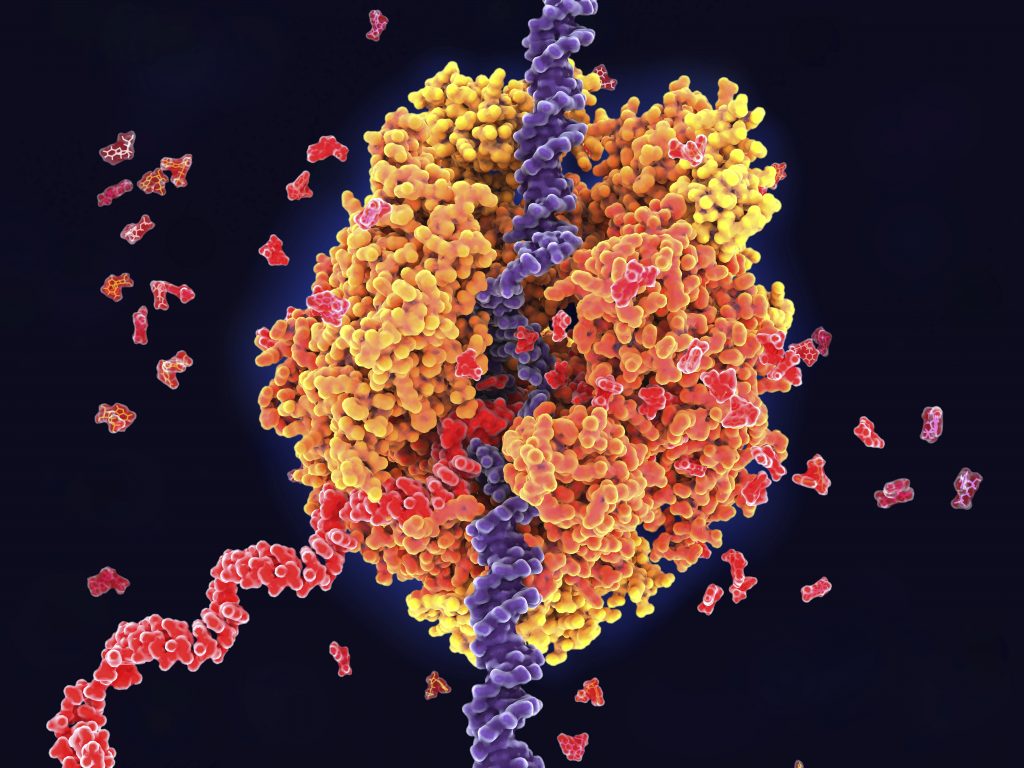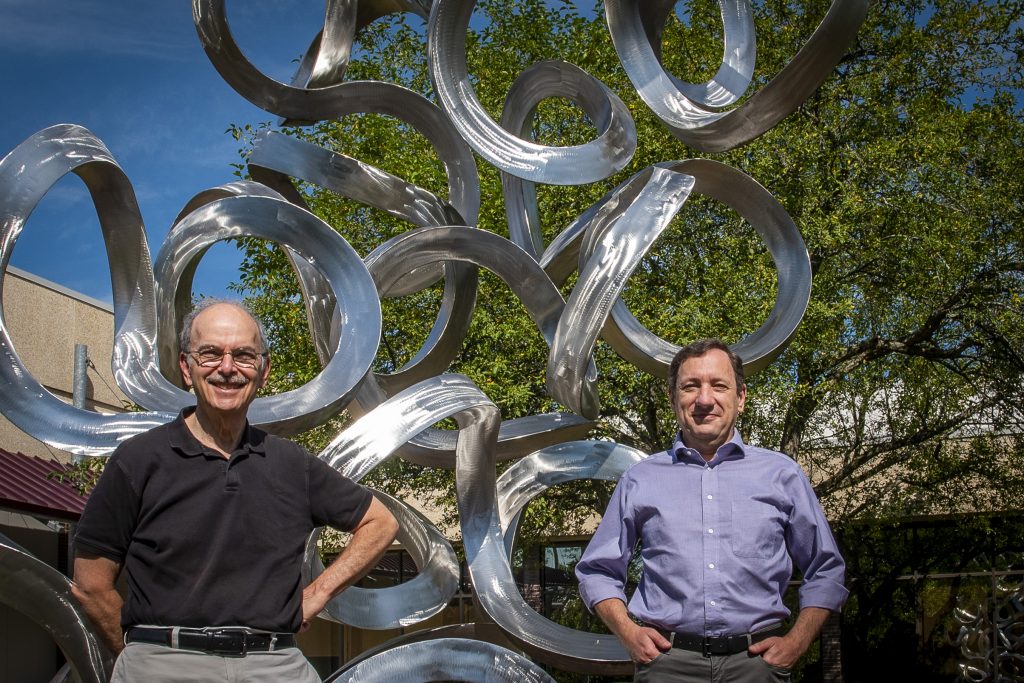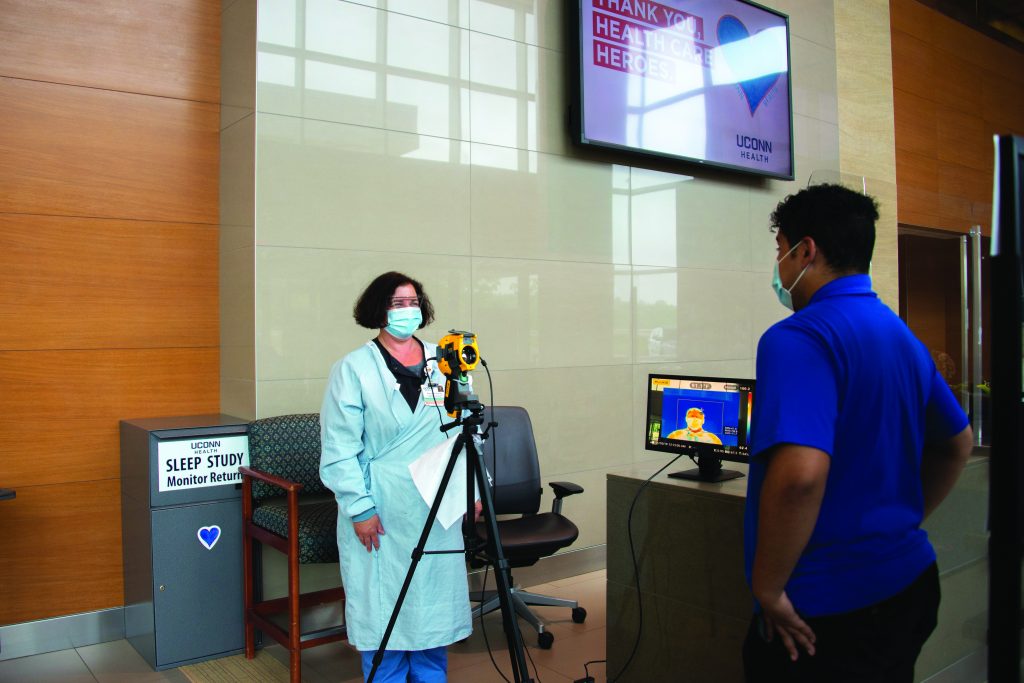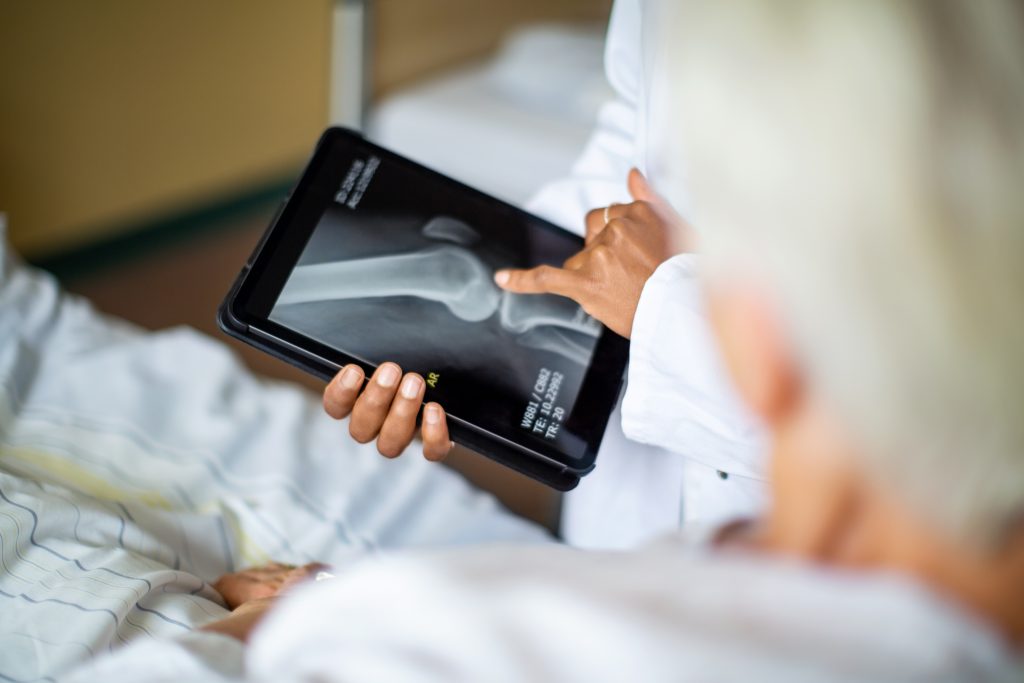
Writer
Kim Krieger
Kim Krieger has covered politics from Capitol Hill and energy commodities from the floor of the New York Mercantile Exchange. Her stories have exposed fraud in the California power markets and mathematical malfeasance in physics. And she knows what really goes on in the National Radio Quiet Zone. These days, Kim tells clear, compelling stories of the research at UConn. Her work connects Connecticut citizens and the press with the vast resources of their flagship public university. When not at UConn, she can be found kayaking among the beautiful Norwalk islands, digging in her garden, or occasionally enjoying the silence in the National Radio Quiet Zone.
Author Archive
Stretching Makes the Superconductor
Superconductors could make everything from the power grid to personal computers more efficient. UConn researcher Ilya Sochnikov and his students are working to better understand these materials.
October 12, 2020 | Kim Krieger
Hearing Speech Requires Quiet – In More Ways Than One
The painstaking work of two UConn Health researchers led to surprising insights about how the brain processes sounds.
September 25, 2020 | Kim Krieger
Researchers Call for International Collaboration on Parathyroid Cancer
UConn Health researchers are calling for a global effort to study parathyroid tumors in a bid to find treatments for a rare but serious type of cancer.
August 26, 2020 | Kim Krieger
Stem Cell ‘Therapy’ Injuries More Widespread Than We Knew
Grotesque side effects from unproven "stem cell" therapies are more common than we realized, reports a team of researchers led by UConn Health in Annals of Neurology.
July 29, 2020 | Kim Krieger
Massive Project to Understand Our Genes Reveals Secrets of RNA
A UConn Health lab spent five years studying human proteins as part of a massive, ongoing collaboration to identify what, exactly, every single bit of DNA and RNA in the human genome does.
July 29, 2020 | Kim Krieger
NIH Awards $6M to UConn Health Biological Computer Modeling Teams
Two computer modeling teams at UConn Health have been awarded an NIH grant totaling $6 million over five years.
July 28, 2020 | Kim Krieger
Psychiatric Visits to the Emergency Room Rise Despite the ACA
Despite expanded health insurance coverage, America's emergency rooms have seen a steady increase in psychiatric visits since 2006.
July 28, 2020 | Kim Krieger
Neither Natural Nor Safe: Compounded Bioidentical Hormones Need Better Evidence
A category of hormone treatments often promoted as safe and "natural" need far more study and research to evaluate those claims, according to a UConn expert.
July 8, 2020 | Kim Krieger
The Re-Engineering of UConn Health
When UConn Health professionals saw the rapid spread of the COVID-19 pandemic, they knew that "business as usual" was over.
July 8, 2020 | Kim Krieger
Buzzing to Rebuild Broken Bone: It’s Electric!
A group of biomedical engineers from UConn have developed a scaffold of non-toxic polymer that generates a controllable electrical field to encourage bone growth.
July 2, 2020 | Kim Krieger









